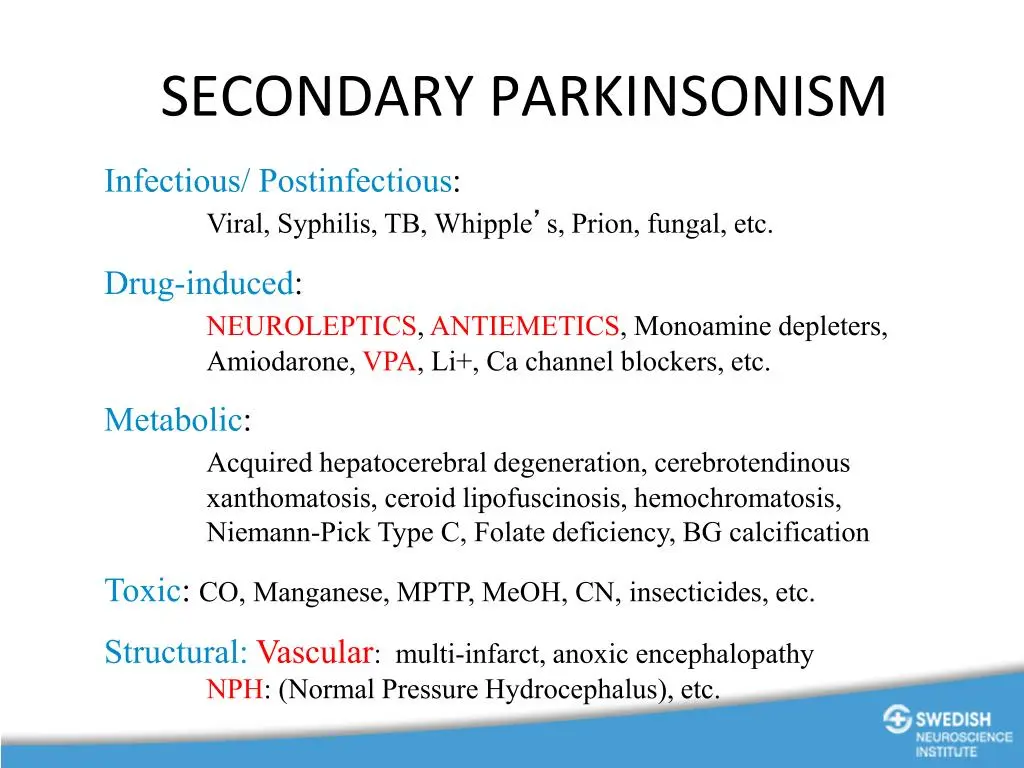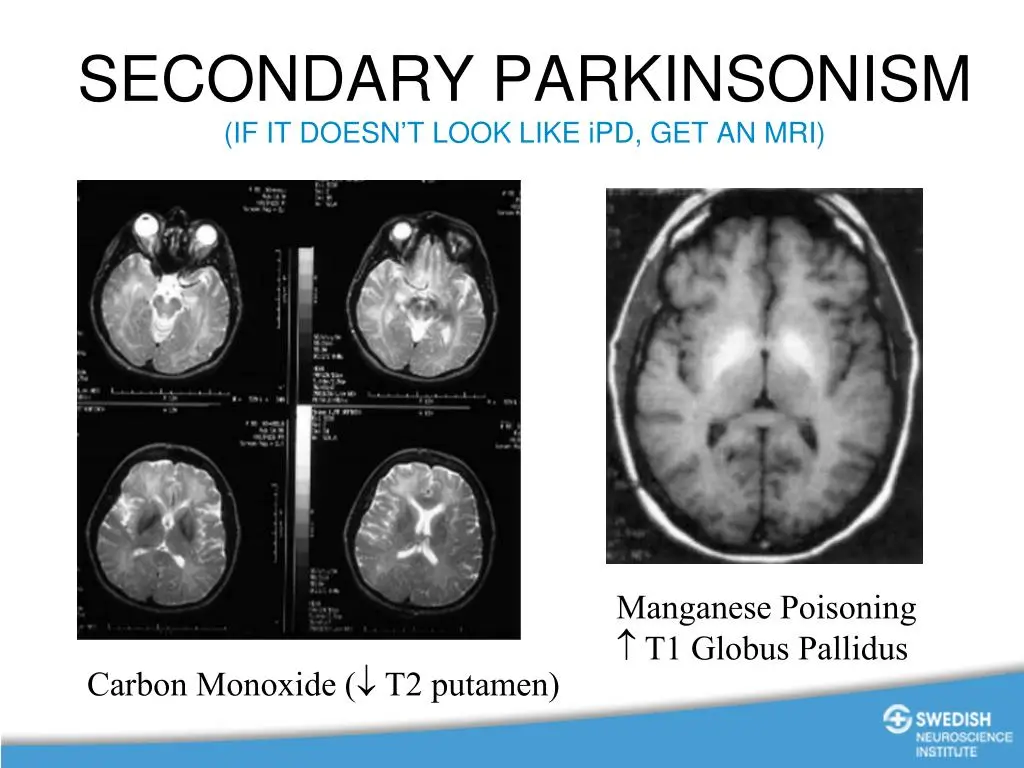Can Secondary Parkinsonism be Cured?
Depends on cause
Management involves addressing the underlying cause, adjusting medications

What is Secondary Parkinsonism?
Secondary parkinsonism is a condition with symptoms similar to Parkinson’s disease but caused by factors other than the neurodegenerative process seen in Parkinson’s. Treatment involves addressing the underlying cause, and medications may be used to manage symptoms. Regular monitoring is important for assessing symptom improvement and managing the underlying condition.

Clinical Aspects

Characteristics
Parkinson’s-like symptoms due to factors other than Parkinson’s disease

Symptoms
Tremors, stiffness, difficulty with movement

Diagnosis
Clinical examination, sometimes imaging studies

Prognosis
Variable; depends on the underlying cause and response to treatment

Complications
Impaired mobility, complications of untreated secondary parkinsonism
Etiology and Treatment

Causes
Medication side effects, head trauma, vascular disorders

Treatments
Treating underlying cause, adjusting medications

Prevention
Treating underlying cause, adjusting medications
Public Health and Patient Perspectives

Epidemiology
Parkinson’s-like symptoms resulting from another condition

Patient Perspectives
Management focuses on treating the underlying cause and improving symptoms
For personalized advice and care, always seek the assistance of healthcare professionals. This information is meant for general understanding and not as a replacement for professional medical advice.
Share: